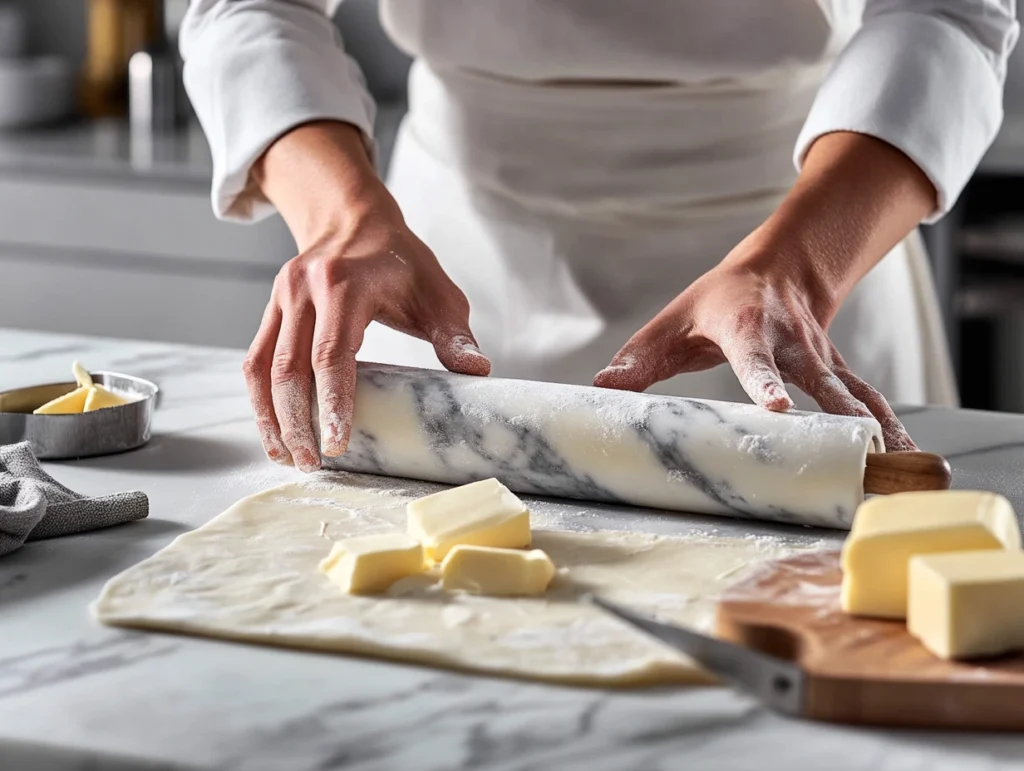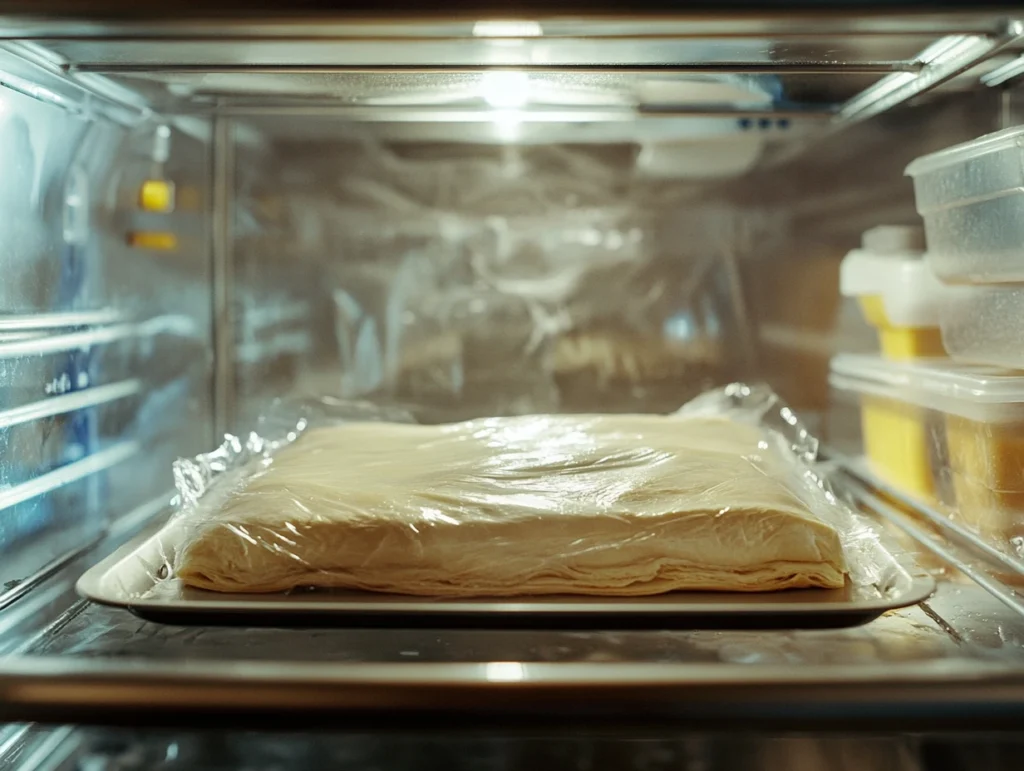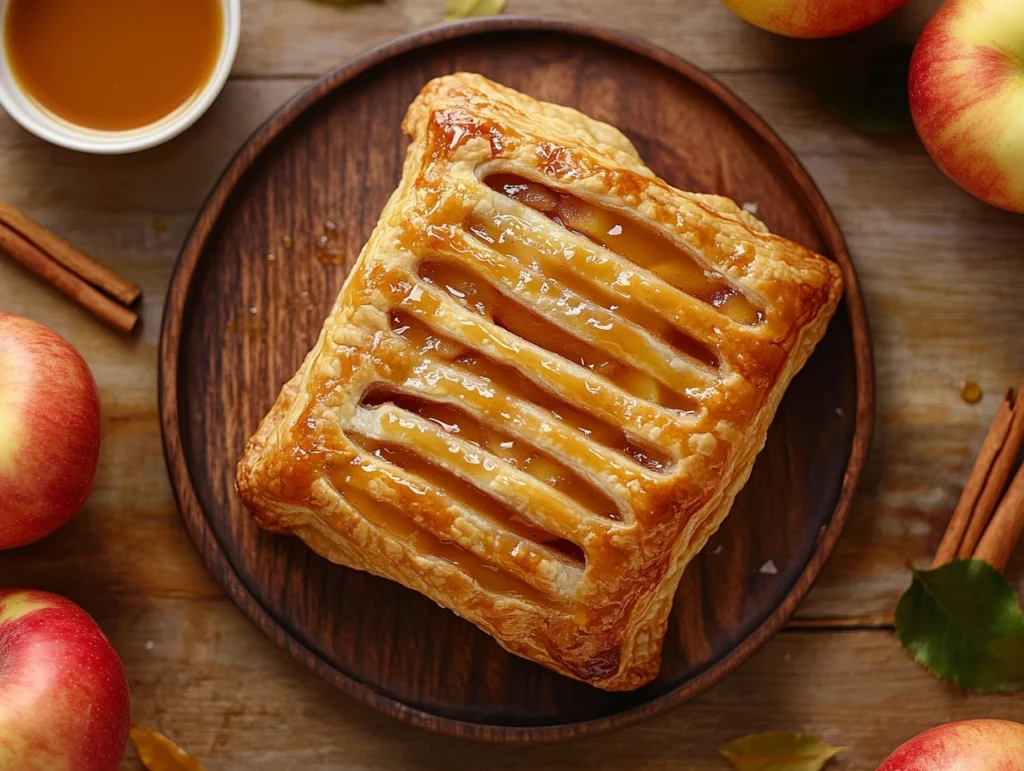When it comes to puff pastry, perfection lies in the details. This versatile and flaky delight is a favorite in kitchens, but it can be surprisingly easy to mess up. From thawing mishaps to improper handling, there are several critical pitfalls you’ll want to avoid. This guide will walk you through the most common mistakes and how to steer clear of them, ensuring your puff pastry turns out light, airy, and delicious every time. Let’s dive into Part 1: handling puff pastry the right way!
Mistakes to Avoid When Handling Puff Pastry
Avoid Thawing Puff Pastry Too Quickly
One of the easiest ways to ruin puff pastry is by thawing it too fast. Puff pastry relies on its layers of dough and butter to create that perfect flakiness. If you try to rush this process by using a microwave or leaving it out in a warm spot, you risk melting the butter layers prematurely.
- Why Thawing Slowly is Important
Thawing puff pastry in the refrigerator is ideal because it allows the butter to stay intact within the dough. When the butter melts too early, it creates a greasy mess instead of light, crisp layers. - The Risks of Rushed Thawing
A rushed thaw can also make the dough unevenly pliable, leading to tears when you roll it out. Plus, a partially frozen sheet might crack, disrupting the delicate layering.

Don’t Overwork the Dough
Handling puff pastry is an art. Overworking it is a surefire way to compromise its texture and rise. Many bakers mistakenly think they need to knead it like bread dough, but that’s a big no-no.
- Why Excessive Handling Hurts Puff Pastry
Puff pastry is all about those delicate layers. When you handle it too much, you risk compressing or breaking them. This results in a denser, less airy final product—hardly the puff pastry you’re aiming for! - How to Handle Puff Pastry Properly
Always use a light touch. Flour your surface sparingly to prevent sticking, and avoid pressing down too hard when rolling. If you notice the dough becoming too soft or stretchy, pop it back in the fridge for a few minutes to firm up.
Ingredients and Tools to Avoid with Puff Pastry
Choosing the Wrong Type of Puff Pastry
Selecting the right puff pastry can make or break your recipe. Not all puff pastries are created equal, and choosing the wrong type can lead to a subpar dish.
- Pre-made vs. Homemade Puff Pastry
Pre-made puff pastry is a convenient option, but its quality varies. Many commercial brands use lower-quality ingredients that compromise flavor and texture. Homemade puff pastry often tastes better but requires time and effort. Choose what fits your recipe and skill level. - What to Look for in a Quality Puff Pastry
Always check the ingredient list! A high-quality puff pastry should contain real butter instead of margarine. Butter provides the rich, flaky layers that elevate your dish to perfection.
For more on using pastry in breakfast dishes, see this guide to puff pastry breakfast recipes for inspiration.
Avoiding the Wrong Baking Tools
The tools you use when working with puff pastry can significantly affect the outcome. From rolling pins to surfaces, every detail matters.
- The Importance of Using a Cold Rolling Pin
Rolling pins made from marble or metal that can stay cold are ideal. A warm rolling pin can soften the butter layers, ruining the delicate structure. Chill your rolling pin beforehand to keep things cool. - The Right Surface for Rolling Puff Pastry
Avoid wooden surfaces, as they can warm the dough too quickly. Opt for a marble or granite countertop that stays naturally cold, helping to preserve the layers.
Oven and Baking Mistakes with Puff Pastry
Never Bake Puff Pastry in a Cold Oven
A cold oven is one of the most common baking mistakes with puff pastry. Proper heat is essential to achieve those signature flaky layers.
- Preheating Your Oven: A Key Step
Puff pastry needs a sudden burst of heat to puff up. Preheat your oven to the required temperature (usually 375°F to 425°F) before putting your pastry in. This ensures even and consistent baking. - How a Cold Oven Affects Puff Pastry
Starting in a cold oven causes butter layers to melt rather than steam, leading to a greasy, dense pastry instead of a light and airy one.
Avoid Overcrowding the Baking Tray
Puff pastry needs room to expand. Overcrowding your baking sheet can result in unevenly cooked or under-risen pastries.
- The Importance of Space for Puff Pastry to Rise
Leave at least an inch of space between each piece on the tray. This ensures proper airflow, allowing the pastry to bake evenly and rise beautifully. - How to Arrange Puff Pastry on a Baking Sheet
Use parchment paper to prevent sticking and avoid using dark-colored trays, which can overheat and scorch the bottom of the pastry.
Internal link suggestion: Check out this recipe on how to make desserts with puff pastry for innovative ideas that avoid common pitfalls.
Environmental Factors to Avoid When Working with Puff Pastry
Avoid Working in a Hot Kitchen
Temperature plays a crucial role when working with puff pastry. A hot kitchen can spell disaster for the dough, affecting its texture and rise.
- The Effects of Heat on Puff Pastry Dough
Puff pastry relies on layers of chilled butter to create its flaky texture. If your kitchen is too warm, the butter softens or melts, ruining those essential layers. This results in a flat, greasy pastry rather than a light, crisp one. - Best Kitchen Temperature for Puff Pastry Preparation
Ideally, your kitchen should be cool, around 65°F to 70°F. If you’re working on a particularly hot day, consider chilling your tools and ingredients. Taking frequent breaks to refrigerate the dough can also help maintain its integrity.
For more baking tips, explore this guide on savory puff pastry breakfast ideas to enhance your repertoire.
Avoid Humid Conditions
Humidity is another environmental factor that can impact puff pastry preparation. Excess moisture in the air can be just as damaging as high heat.
- Why Humidity Can Ruin Puff Pastry
When exposed to moisture, puff pastry dough becomes sticky and difficult to handle. The excess water can also prevent the layers from separating properly, leading to uneven puffing. - Tips for Working in a Humid Environment
Use a dehumidifier or work in an air-conditioned space if possible. Dusting your work surface and tools with just enough flour can also help manage stickiness without adding too much additional weight to the dough.

Common Mistakes When Storing Puff Pastry
Never Store Puff Pastry in the Wrong Temperature
Proper storage is key to keeping puff pastry fresh and ready to use. Mishandling storage conditions can lead to ruined dough and wasted time.
- Ideal Storage Conditions for Puff Pastry
Keep pre-made puff pastry in the freezer until you’re ready to use it. If it’s homemade, wrap it tightly in plastic wrap to prevent freezer burn. For short-term storage, refrigerate the dough, but don’t leave it for more than 24 hours. - The Dangers of Storing Puff Pastry in a Warm Place
Warm storage temperatures can cause the butter layers to melt prematurely, making the dough unusable. Always check the temperature settings of your fridge or freezer to ensure consistent cooling.
Avoid Freezing Puff Pastry Improperly
Freezing puff pastry incorrectly can compromise its texture and flavor. Follow best practices to keep your pastry in top condition.
- How Freezing Affects the Texture of Puff Pastry
Improperly frozen puff pastry may develop ice crystals, which can lead to soggy or uneven dough when thawed. - Best Practices for Freezing Puff Pastry
Always wrap the dough in multiple layers of plastic wrap and place it in an airtight container. Label it with the date to ensure you use it before its quality declines.
For more storage tips and creative recipes, check out other recipes on the Elon Recipes blog to find inspiration for your next baking adventure!
FAQs on Puff Pastry Mistakes
Why Did My Puff Pastry Not Puff Up?
One of the most common concerns with puff pastry is when it fails to rise. This issue is often caused by a few avoidable mistakes.
- Common Reasons for Flat Puff Pastry
Puff pastry won’t rise if it’s rolled too thin, baked at the wrong temperature, or thawed improperly. Always ensure the dough is evenly thick and bake it in a preheated oven to give it the initial heat burst it needs. - How to Prevent This Mistake
Chill the dough before baking to keep the butter layers intact, and avoid over-handling the pastry, as this can compress the layers.
How Do I Prevent My Puff Pastry From Getting Soggy?
A soggy puff pastry can ruin an otherwise delicious dish, especially in tarts or pies with juicy fillings.
- Why Puff Pastry Gets Soggy
Puff pastry often absorbs moisture from wet fillings or improperly lined trays. - Quick Fixes to Avoid Sogginess
Use parchment paper, apply an egg wash to the base, and consider pre-baking the crust slightly before adding the filling. This creates a barrier that helps keep the pastry crisp.
Conclusion and Final Tips
Puff pastry is a delicate ingredient that rewards careful preparation and attention to detail. Understanding what things you should avoid with puff pastry is the first step to creating bakery-quality results at home. From thawing slowly to avoiding humid workspaces, every step matters when working with this flaky dough.
Remember, always use the right tools, bake at the correct temperature, and store your puff pastry properly. With these tips, you can avoid common pitfalls and achieve light, airy layers every time. Whether you’re making a savory tart or a sweet turnover, following these guidelines will ensure your puff pastry impresses every bite.
For more ideas and delicious recipes, don’t forget to explore other culinary tips on the Elon Recipes blog!
Advanced Tips to Avoid Common Puff Pastry Issues
Understanding Butter Temperature
One of the top tips for working with puff pastry is controlling the butter temperature. Getting this right ensures the dough’s texture stays perfect.
- Why Butter Matters in Puff Pastry
Puff pastry relies on layers of chilled butter to create its iconic flakiness. If the butter gets too warm during rolling or folding, it blends with the dough, ruining the lamination. - How to Maintain the Right Butter Temperature
Keep the dough cool at every step. Refrigerate the dough between rolling sessions, and work in short bursts to avoid overheating the butter layers.
Avoid Skipping Rest Periods
Many bakers are tempted to skip resting time between folds, especially when pressed for time. However, this can lead to uneven puffing and a dense final product.
- Why Resting Dough is Crucial
Resting allows the gluten in the dough to relax, preventing shrinkage during baking. It also gives the butter a chance to re-solidify, preserving the layers. - Best Practices for Resting Dough
Chill the dough for at least 30 minutes between folds, and refrigerate it for an hour before baking for the best results.
By mastering these advanced techniques, you can avoid many common issues with puff pastry and elevate your baking to the next level.
Experimenting with Puff Pastry Recipes
Getting Creative with Fillings

Now that you know what things to avoid with puff pastry, it’s time to experiment! The choice of filling can make or break your recipe, so choose wisely.
- Avoid Overloading with Wet Fillings
Wet fillings can seep into the dough and ruin its texture. Stick to firmer fillings or pre-cook and cool ingredients like fruits or vegetables to remove excess moisture. - Pairing Flavors for Maximum Impact
Savory options like cheese and spinach or sweet combos like apple and cinnamon bring out the best in puff pastry. Don’t be afraid to experiment with unique flavor profiles!
Exploring Shapes and Designs
Puff pastry is versatile and can be shaped into tarts, turnovers, or even intricate braided designs.
- Avoid Rushing Complex Shapes
Shaping puff pastry takes time and precision. Rushing through this step can lead to uneven edges or tears in the dough. - Tips for Perfect Presentation
Use a sharp knife to make clean cuts, and always chill shaped pastries before baking to help them hold their structure.
For inspiration on creative puff pastry dishes, check out this recipe for breakfast sliders with puff pastry.
